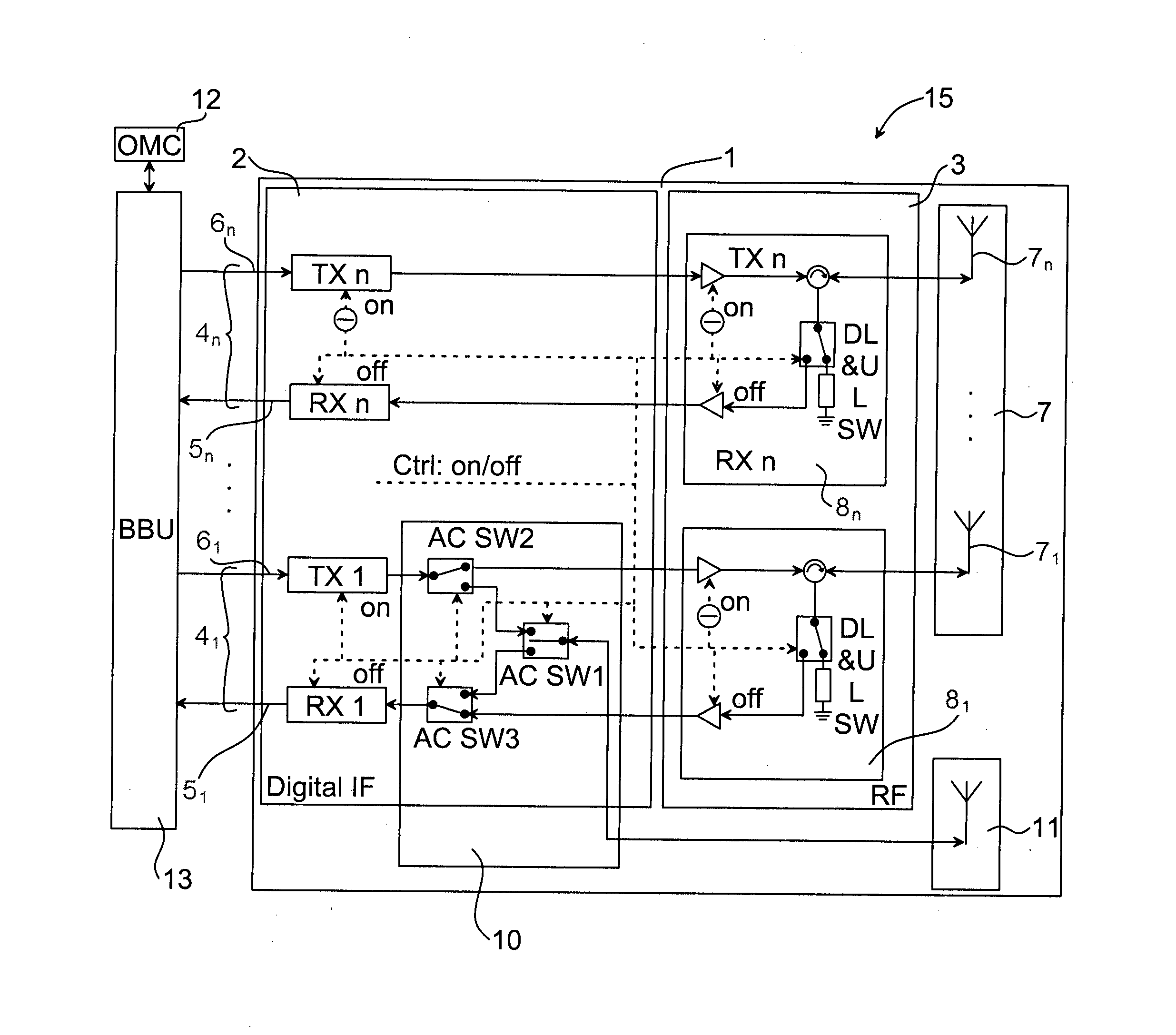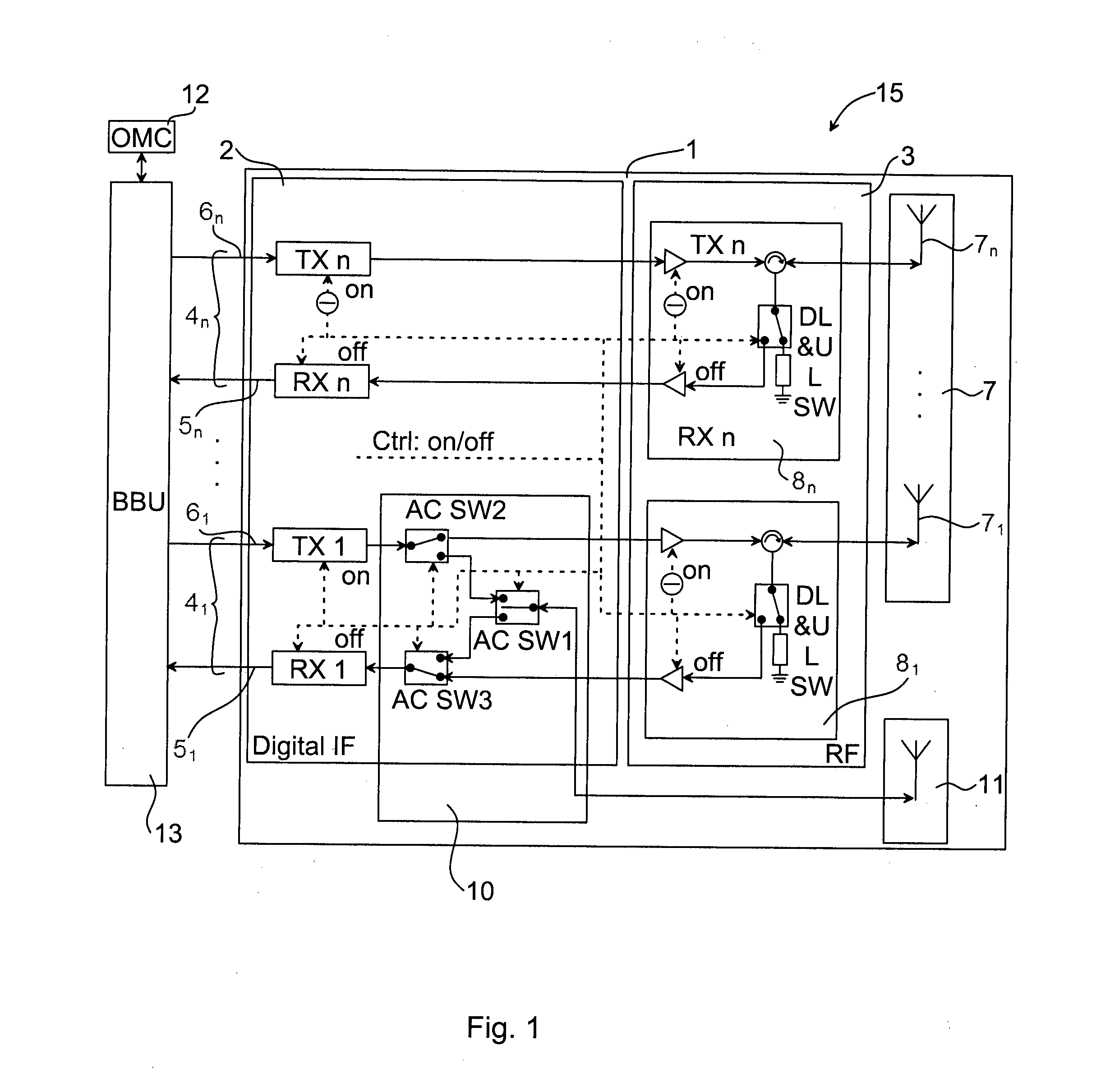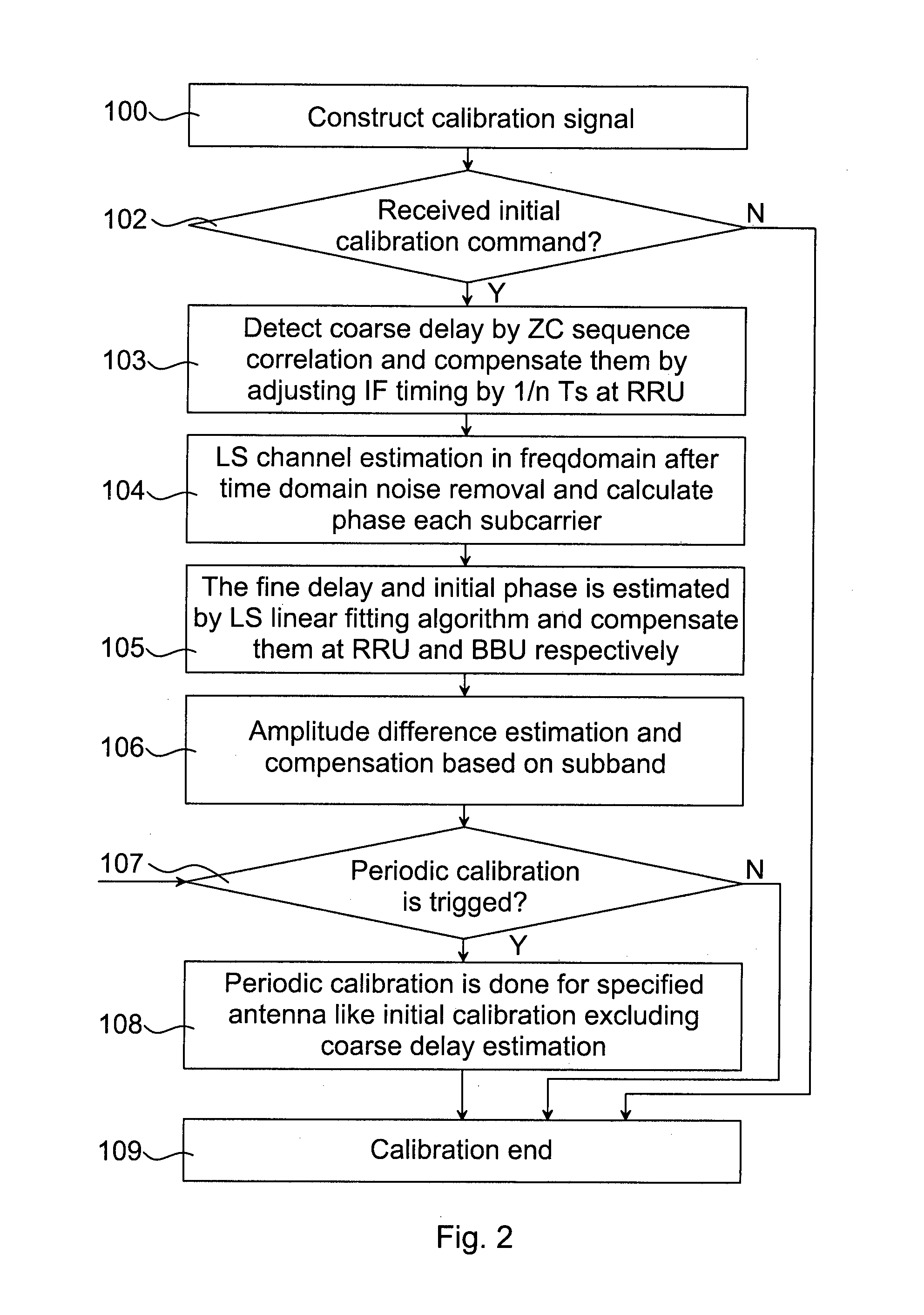Methods, processing device, computer programs, computer program products, and antenna apparatus for calibration of antenna apparatus
- Summary
- Abstract
- Description
- Claims
- Application Information
AI Technical Summary
Benefits of technology
Problems solved by technology
Method used
Image
Examples
Embodiment Construction
[0026]In the following description, for purposes of explanation and not limitation, specific details are set forth such as particular architectures, interfaces, techniques, etc. in order to provide a thorough understanding. In other instances, detailed descriptions of well-known devices, circuits, and methods are omitted so as not to obscure the description with unnecessary detail. Same reference numerals refer to same or similar elements throughout the description.
[0027]FIG. 1 illustrates an antenna array system 15 comprising an antenna apparatus 1 in accordance with an embodiment. The antenna apparatus 1 may for example comprise a remote radio unit (RRU) 1.
[0028]The antenna apparatus 1 comprises a transceiver part 2 and a power amplifier part 3 (or radio frequency part). The power amplifier part 3 comprises for each of a number of transceiver chains 41, . . . , 4n transmit / receive switches 81, . . . , 8n for switching a transmit chain 6i or a receive chain 5i to an antenna element...
PUM
 Login to View More
Login to View More Abstract
Description
Claims
Application Information
 Login to View More
Login to View More - R&D
- Intellectual Property
- Life Sciences
- Materials
- Tech Scout
- Unparalleled Data Quality
- Higher Quality Content
- 60% Fewer Hallucinations
Browse by: Latest US Patents, China's latest patents, Technical Efficacy Thesaurus, Application Domain, Technology Topic, Popular Technical Reports.
© 2025 PatSnap. All rights reserved.Legal|Privacy policy|Modern Slavery Act Transparency Statement|Sitemap|About US| Contact US: help@patsnap.com



